Abstract
1. Oral micronized progesterone (P) is proposed for the treatment of certain endocrine gynaecological disorders. To examine the effects of P on performance and mood, a randomized, placebo-controlled study of 24 healthy females ages 18-24 years on low-dose oral contraceptives was conducted. 2. Subjects were admitted to the Clinical Research Center on four occasions and received single doses of oral P (300, 600, 1200 mg) or placebo. Blood sampling, psychometric tests and mood scales were administered at baseline and at hourly intervals for 6 h. 3. P doses produced significant dose-related but highly variable increases in plasma P concentrations. Fatigue increased with P doses, although few subjects were objectively drowsy. Very high peak plasma P concentrations, achieved by some subjects at the 1200 mg dose, were associated with decreased information processing and verbal memory function as well as fatigue. 4. We conclude that oral P can safely be prescribed at higher than previously-reported doses, based on evidence of transient behavioural effects only at the highest doses in some subjects who achieved high plasma P concentrations.
Full text
PDF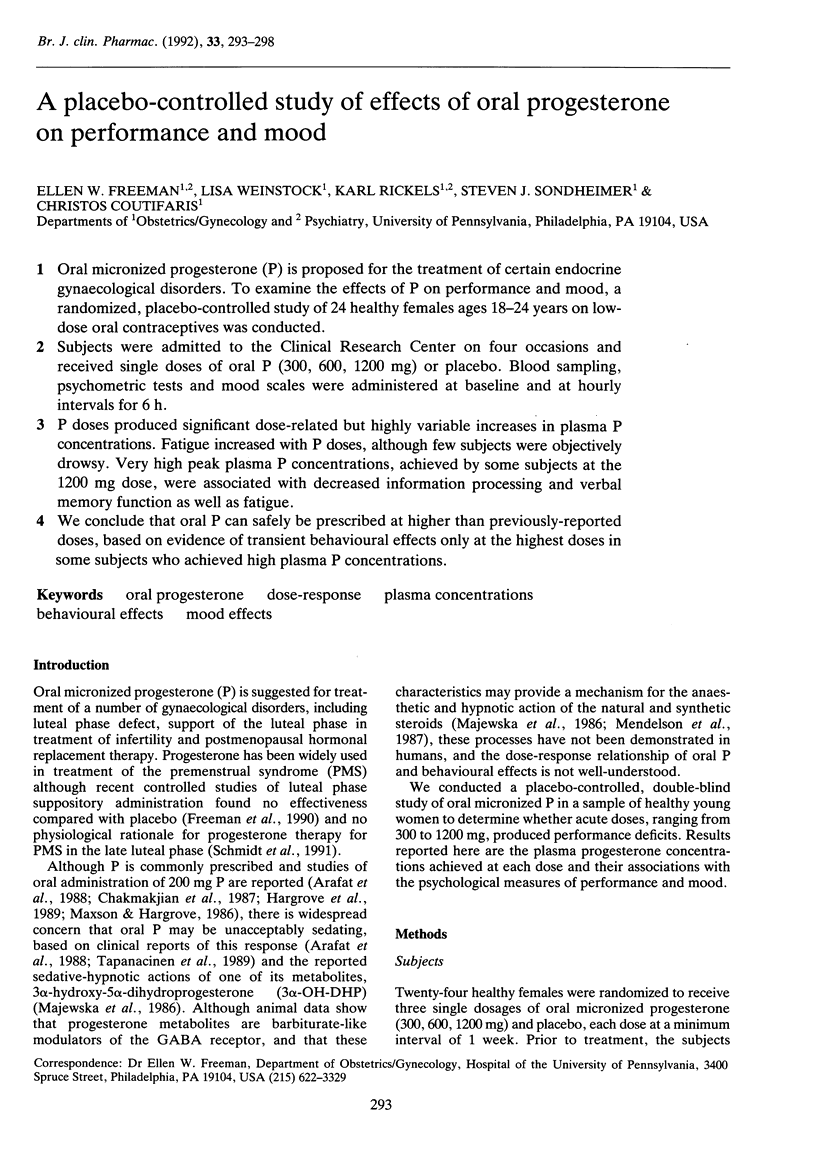
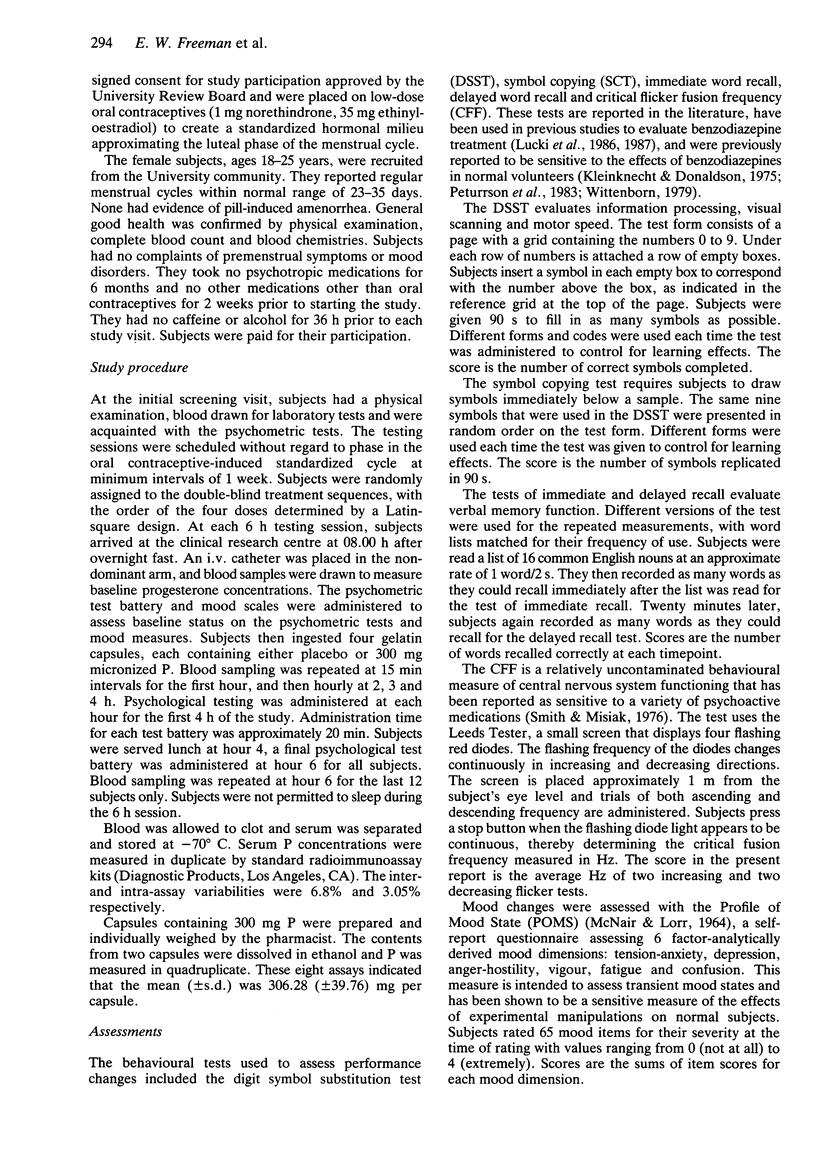
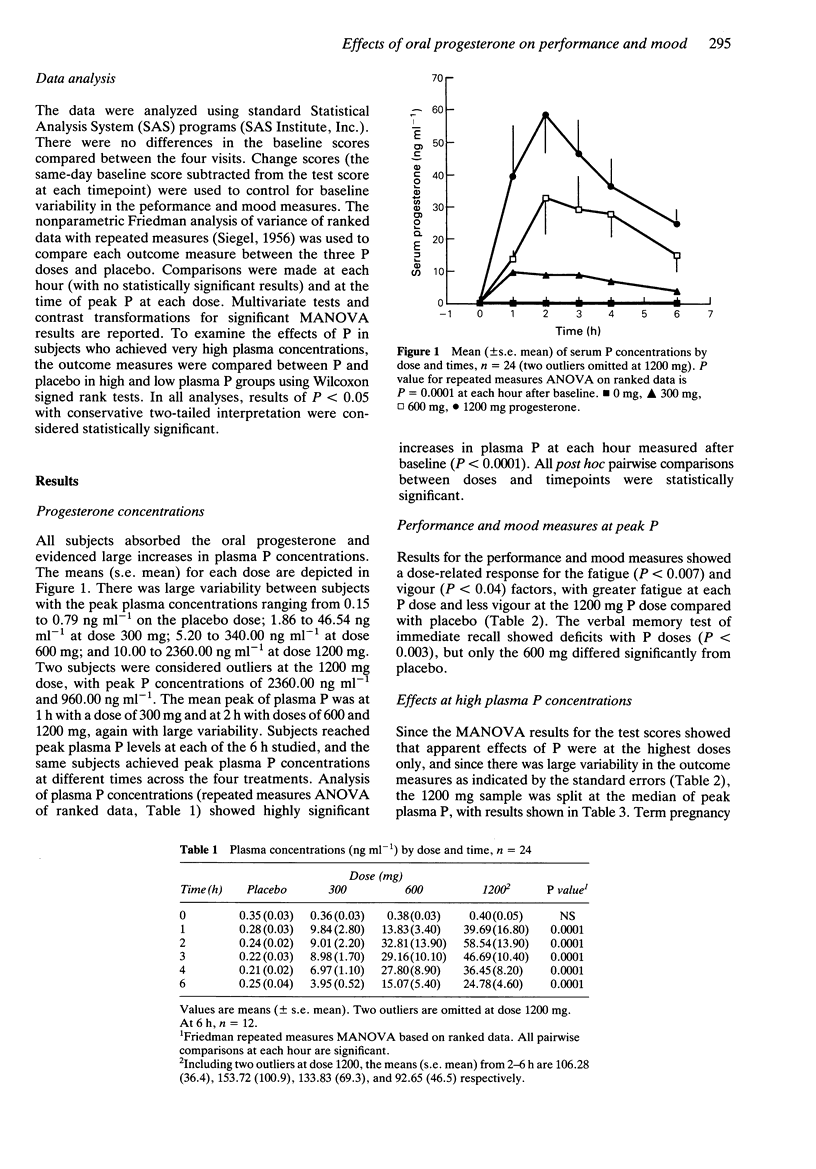
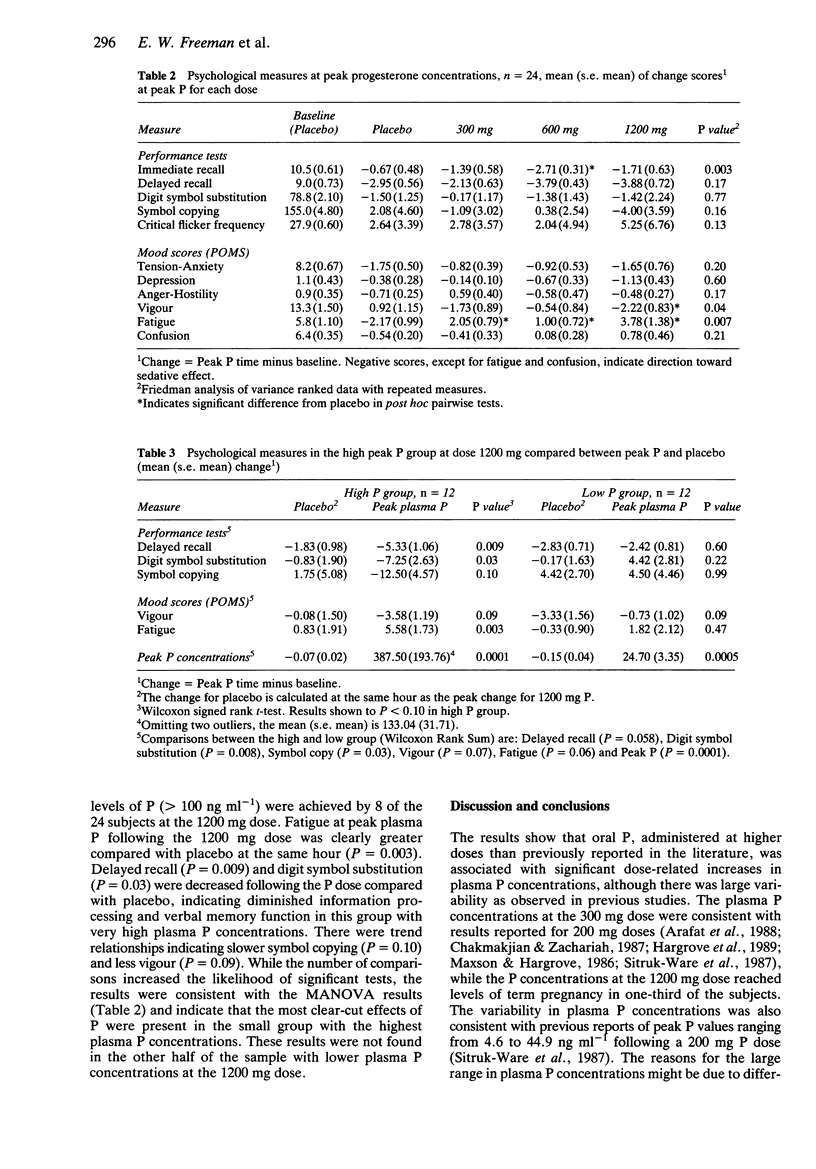
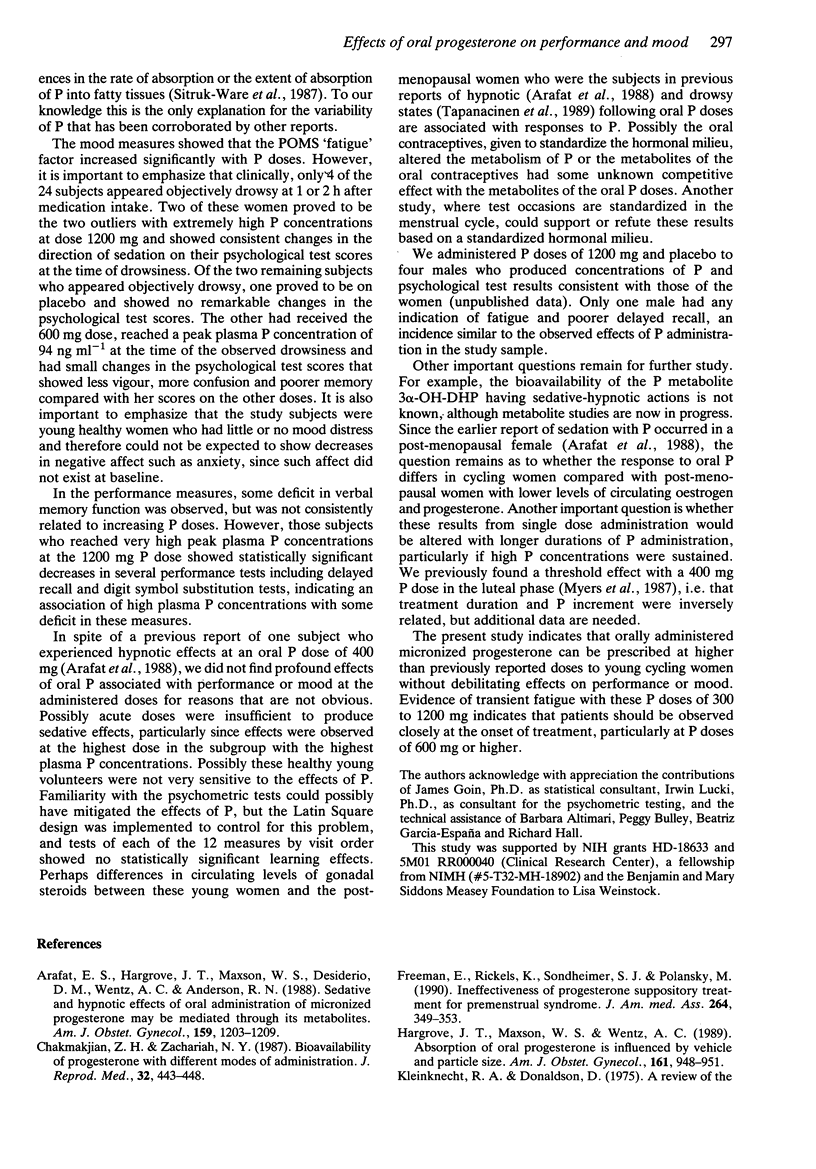

Selected References
These references are in PubMed. This may not be the complete list of references from this article.
- Arafat E. S., Hargrove J. T., Maxson W. S., Desiderio D. M., Wentz A. C., Andersen R. N. Sedative and hypnotic effects of oral administration of micronized progesterone may be mediated through its metabolites. Am J Obstet Gynecol. 1988 Nov;159(5):1203–1209. doi: 10.1016/0002-9378(88)90448-6. [DOI] [PubMed] [Google Scholar]
- Chakmakjian Z. H., Zachariah N. Y. Bioavailability of progesterone with different modes of administration. J Reprod Med. 1987 Jun;32(6):443–448. [PubMed] [Google Scholar]
- Freeman E., Rickels K., Sondheimer S. J., Polansky M. Ineffectiveness of progesterone suppository treatment for premenstrual syndrome. JAMA. 1990 Jul 18;264(3):349–353. [PubMed] [Google Scholar]
- Hargrove J. T., Maxson W. S., Wentz A. C. Absorption of oral progesterone is influenced by vehicle and particle size. Am J Obstet Gynecol. 1989 Oct;161(4):948–951. doi: 10.1016/0002-9378(89)90759-x. [DOI] [PubMed] [Google Scholar]
- Kleinknecht R. A., Donaldson D. A review of the effects of diazepam on cognitive and psychomotor performance. J Nerv Ment Dis. 1975 Dec;161(6):399–414. doi: 10.1097/00005053-197512000-00004. [DOI] [PubMed] [Google Scholar]
- Lucki I., Rickels K., Geller A. M. Chronic use of benzodiazepines and psychomotor and cognitive test performance. Psychopharmacology (Berl) 1986;88(4):426–433. doi: 10.1007/BF00178503. [DOI] [PubMed] [Google Scholar]
- Lucki I., Rickels K., Giesecke M. A., Geller A. Differential effects of the anxiolytic drugs, diazepam and buspirone, on memory function. Br J Clin Pharmacol. 1987 Feb;23(2):207–211. doi: 10.1111/j.1365-2125.1987.tb03031.x. [DOI] [PMC free article] [PubMed] [Google Scholar]
- MCNAIR D. M., LORR M. AN ANALYSIS OF MOOD IN NEUROTICS. J Abnorm Psychol. 1964 Dec;69:620–627. doi: 10.1037/h0040902. [DOI] [PubMed] [Google Scholar]
- Majewska M. D., Harrison N. L., Schwartz R. D., Barker J. L., Paul S. M. Steroid hormone metabolites are barbiturate-like modulators of the GABA receptor. Science. 1986 May 23;232(4753):1004–1007. doi: 10.1126/science.2422758. [DOI] [PubMed] [Google Scholar]
- Maxson W. S., Hargrove J. T. Bioavailability of oral micronized progesterone. Fertil Steril. 1985 Nov;44(5):622–626. [PubMed] [Google Scholar]
- Mendelson W. B., Martin J. V., Perlis M., Wagner R., Majewska M. D., Paul S. M. Sleep induction by an adrenal steroid in the rat. Psychopharmacology (Berl) 1987;93(2):226–229. doi: 10.1007/BF00179939. [DOI] [PubMed] [Google Scholar]
- Myers E. R., Sondheimer S. J., Freeman E. W., Strauss J. F., 3rd, Rickels K. Serum progesterone levels following vaginal administration of progesterone during the luteal phase. Fertil Steril. 1987 Jan;47(1):71–75. [PubMed] [Google Scholar]
- Petursson H., Gudjonsson G. H., Lader M. H. Psychometric performance during withdrawal from long-term benzodiazepine treatment. Psychopharmacology (Berl) 1983;81(4):345–349. doi: 10.1007/BF00427575. [DOI] [PubMed] [Google Scholar]
- Schmidt P. J., Nieman L. K., Grover G. N., Muller K. L., Merriam G. R., Rubinow D. R. Lack of effect of induced menses on symptoms in women with premenstrual syndrome. N Engl J Med. 1991 Apr 25;324(17):1174–1179. doi: 10.1056/NEJM199104253241705. [DOI] [PubMed] [Google Scholar]
- Sitruk-Ware R., Bricaire C., De Lignieres B., Yaneva H., Mauvais-Jarvis P. Oral micronized progesterone. Bioavailability pharmacokinetics, pharmacological and therapeutic implications--a review. Contraception. 1987 Oct;36(4):373–402. doi: 10.1016/0010-7824(87)90088-6. [DOI] [PubMed] [Google Scholar]
- Smith J. M., Misiak H. Critical flicker frequency (CFF) and psychotropic drugs in normal human subjects-a review. Psychopharmacologia. 1976 May 28;47(2):175–182. doi: 10.1007/BF00735818. [DOI] [PubMed] [Google Scholar]
- Tapanainen J., Kauppila A., Metsä-Ketelä T., Vapaatalo H. Prostanoids and catecholamines after oral administration of natural progesterone. Gynecol Endocrinol. 1989 Jun;3(2):135–142. doi: 10.3109/09513598909152460. [DOI] [PubMed] [Google Scholar]


